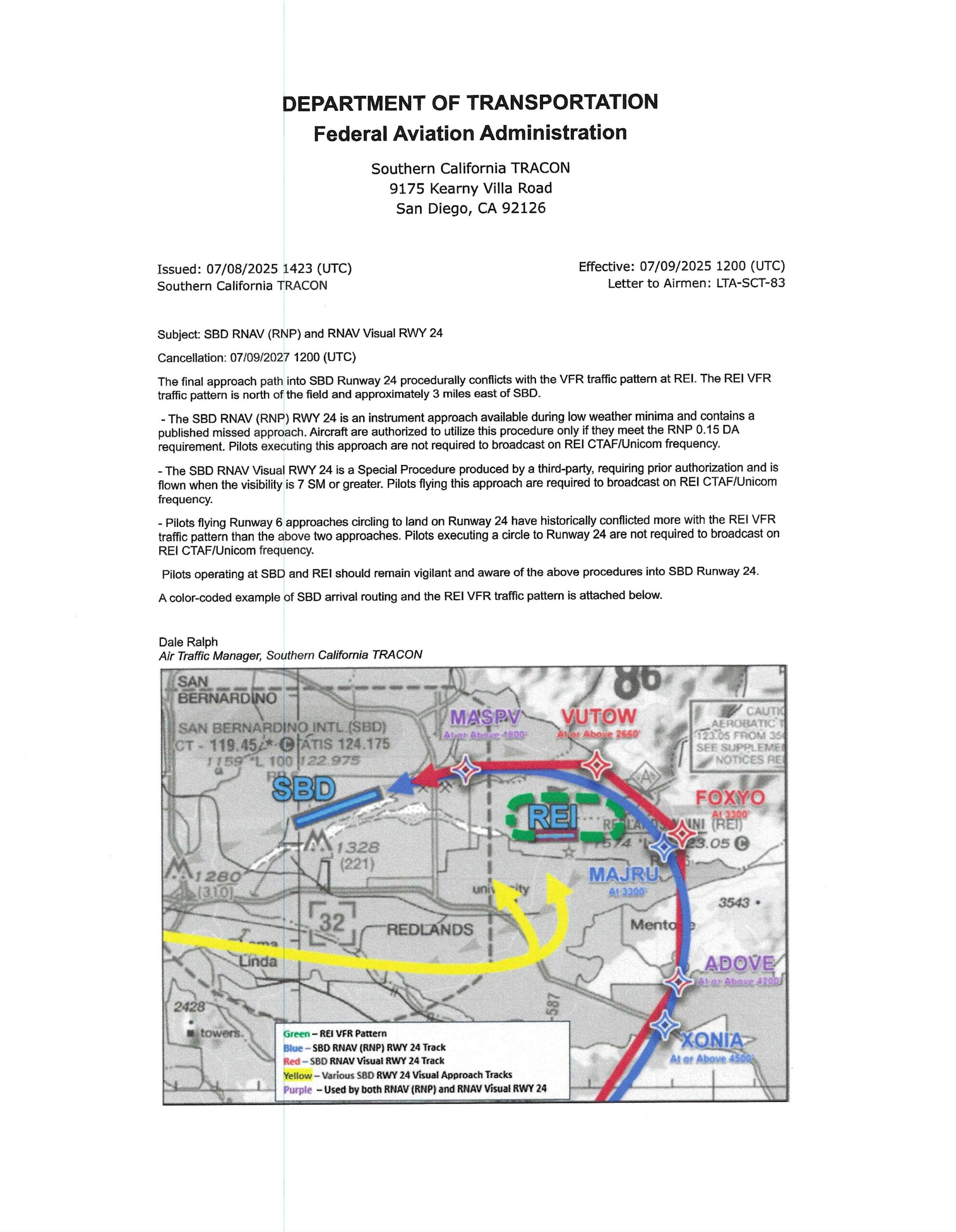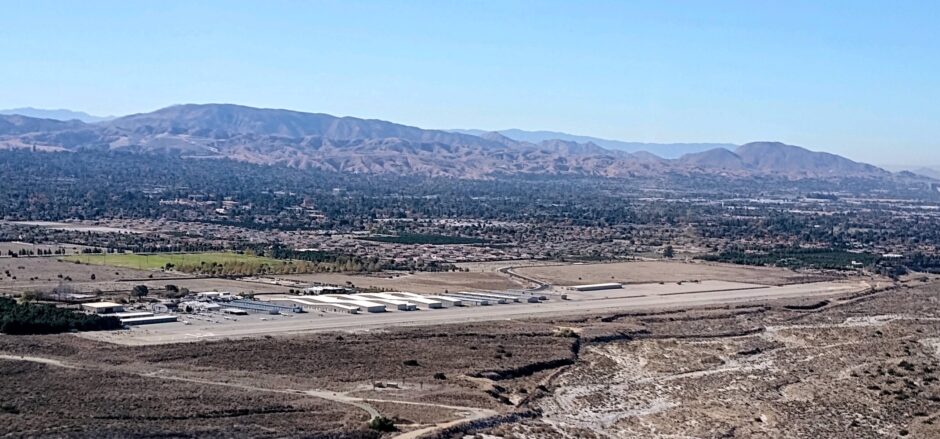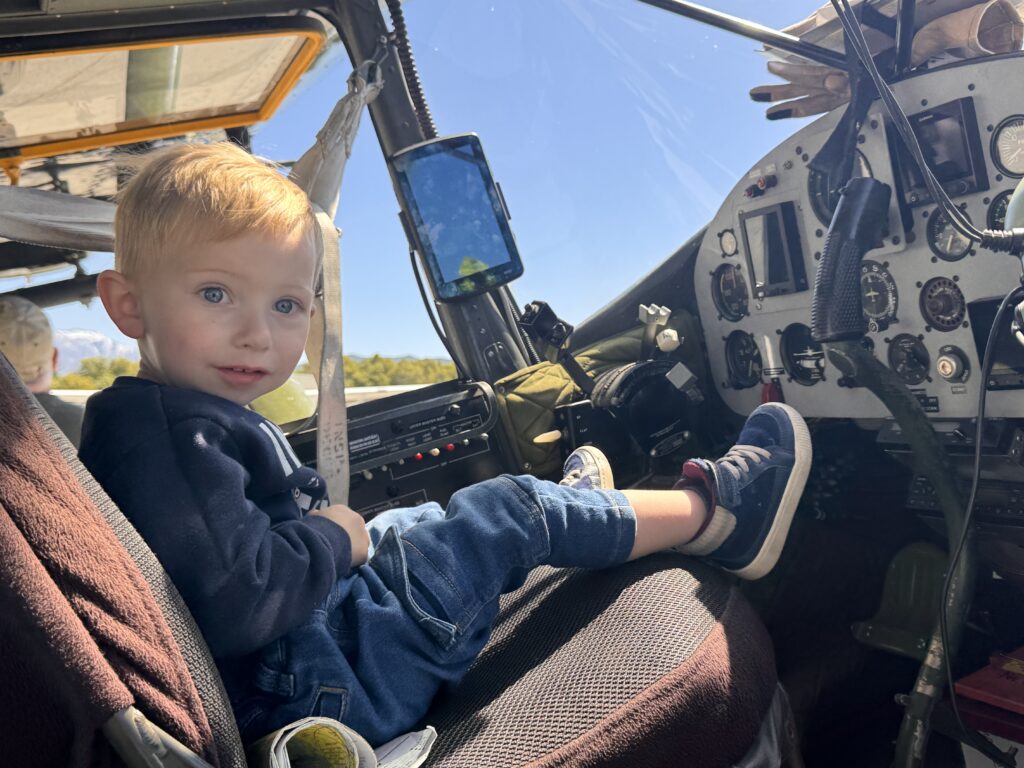This will show up on NOTAM searches for REI and SBD. Please note when pilots using approaches to Rwy 24 are required to broadcast on the REI CTAF.


This will show up on NOTAM searches for REI and SBD. Please note when pilots using approaches to Rwy 24 are required to broadcast on the REI CTAF.

Comments are due by July 7, 2025. Provide yours by going to https://www.regulations.gov/document/NASA_FRDOC_0001-0962 and clicking on “Comment” button.
Reprinted from The Aviation Consumer – By Scott Dyer 6-17-2025

Reprinted from Avweb- By Russ Niles, Saturday 5-31-2025
Court rules it’s “premature” to force the sale of unleaded avgas in California


| FR Document: 2025-06609 Citation: 90 FR 16474 | PDF Pages 16474-16475 (2 pages) Permalink |
| The FAA is withdrawing the notice of proposed rulemaking (NPRM) published in the Federal Register on October 11, 2024, which proposed to modify the Class D airspace, establish Class E airspace designated as an extension to a Class D surface area, and update the administrative portion of the legal description at San Bernardino International Airport, CA (KSBD). | |

Thoryn enjoying a L-19 Cessna Bird Dog at the Spring Fling Event
The morning started out beautifully, not a cloud in the sky. We had a T-28 and PT-19 on display by 9:30-10:00 am for our guests to enjoy. Shortly after they were parked, the wind kicked up. We got gusts of wind 15-18 mph out of the east. Because of the winds, we didn’t get as many aircraft flying in which put a damper on those wishing to display their aircraft for the Historical Aircraft Display Day portion of the event.
We plastered the event all over social media and had a lot of hits and shares. Thankfully, we had a lot of families and guests with children from the community excited to visit the airport, see aircraft and enjoy a lunch. The lunches consisted of your choice of a burger, hot dog or hot link. This came with potato salad, chips, cookies, and a drink for $8. A steal in today’s world. The event was planned from 11:00 am to 2:00 pm. We started serving about 10:45 and by 12:15 we were just about out of food. We high tailed it to Stater Brothers for more food but by 1:00 we were out of all the food and started shutting everything down.
The goal of the RAA is not to make money, but to get the community out to enjoy our airport, and we accomplished that. Even Redlands Mayor Mario Saucedo and Councilmember Marc Shaw ventured out to visit and buy a lunch!
Thanks to Learn to Fly LLC and Mission Flight Academy who joined us by setting up a table in the lobby to pitch their business. We also had some members of the US Coast Guard Auxiliary not only have a table to share what they do, but a couple of them helped cook up the burgers and dogs!
Here is a link to view photos from the event 4-05-25 Spring Fling Fly-In
Last, but certainly not least, I want to thank all those that volunteered. We really appreciate your time and effort to help make this a great event.

The REI Airport Layout Plan and Narrative was approved by the FAA on 11-20-2024.
You can view it on the RAA website at this link:
Redlands Airport Layout Plan & Narrative – FAA Approved 11-20-24